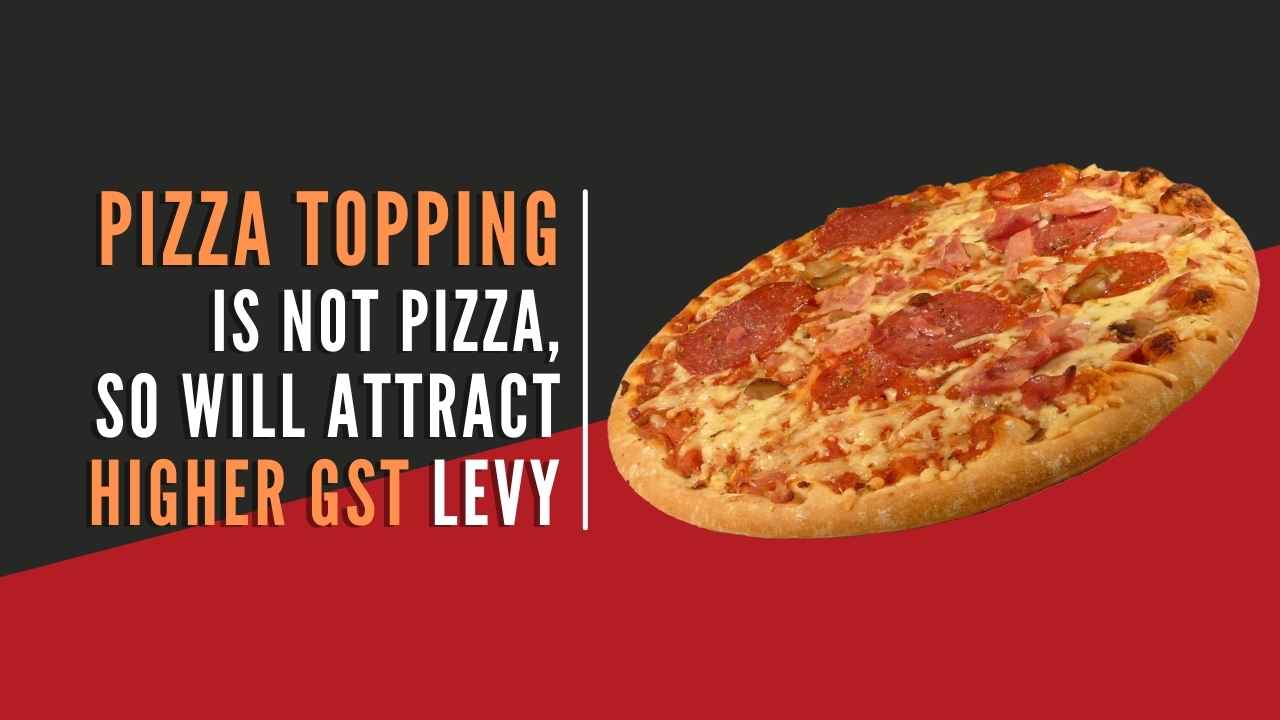The Haryana appellate authority for advance ruling (AAAR) has declared that a pizza topping is not a pizza and so should be categorised differently and subject to a higher 18 percent goods and services tax (GST). According to tax experts, this might make taxes more difficult for some pizza companies, particularly when the pizzas are sold within a hotel or restaurant.

Pizzas have different GST rates depending on how they are cooked and sold. A pizza sold and consumed in a restaurant is subject to 5% GST, a pizza base purchased separately is subject to 12% GST, and a pizza delivered to your home is subject to 18% GST.
Because the technique of preparation differs from that of a pizza, the AAAR determined on March 10 that pizza topping should be subject to 18 percent GST. It looked at all of the elements in a topping and decided that while a pizza topping is labelled as “cheese,” it isn’t actually cheese.
The authorities determined that pizza topping has “vegetable fat” as a significant component of the ingredients, accounting for 22 percent of the total, and so does not qualify to be classified as “processed cheese” or a form of cheese. According to the report, pizza toppings should be classified as ‘food preparation.’
According to tax experts, GST rates may be determined by one of three tests: the common parlance test, the end use test, or the ingredients test, and tax rates may fluctuate depending on how a product is classified. If cheese is labelled as “fat” or “processed food preparation,” it is taxed at a lesser rate.
“In ordinary language, one would see them as cheese toppings and categorise them properly,” said Harpreet Singh, partner at KPMG.
“This emphasises the fact that GST categorization is based on a number of concepts, including the ultimate use of the product, main elements, popular slang, and so on, and is thus a complicated procedure.”
Under GST, there is a different tax debate involving kiosks, restaurants, and home delivery. Restaurants, kiosks, and even pizza firms that acquire these toppings will have to pay 18 percent GST in the future, according to tax experts.
When selling pizzas to clients, however, many of them will be allowed to charge merely 5% GST. According to tax experts, this might have an impact on some pizza firms’ profit margins.
Under GST, product classification has become a difficult task. While lassi and milk are not subject to GST, flavoured milk is subject to a 12 percent tax, while flavoured lassi is exempt from the tax system.
Several AARs have already decided on whether GST applies to food goods. So, while parata and paratha are not the same thing, naan and a samosa eaten at the counter or on a chair outside the shop should be taxed differently.

